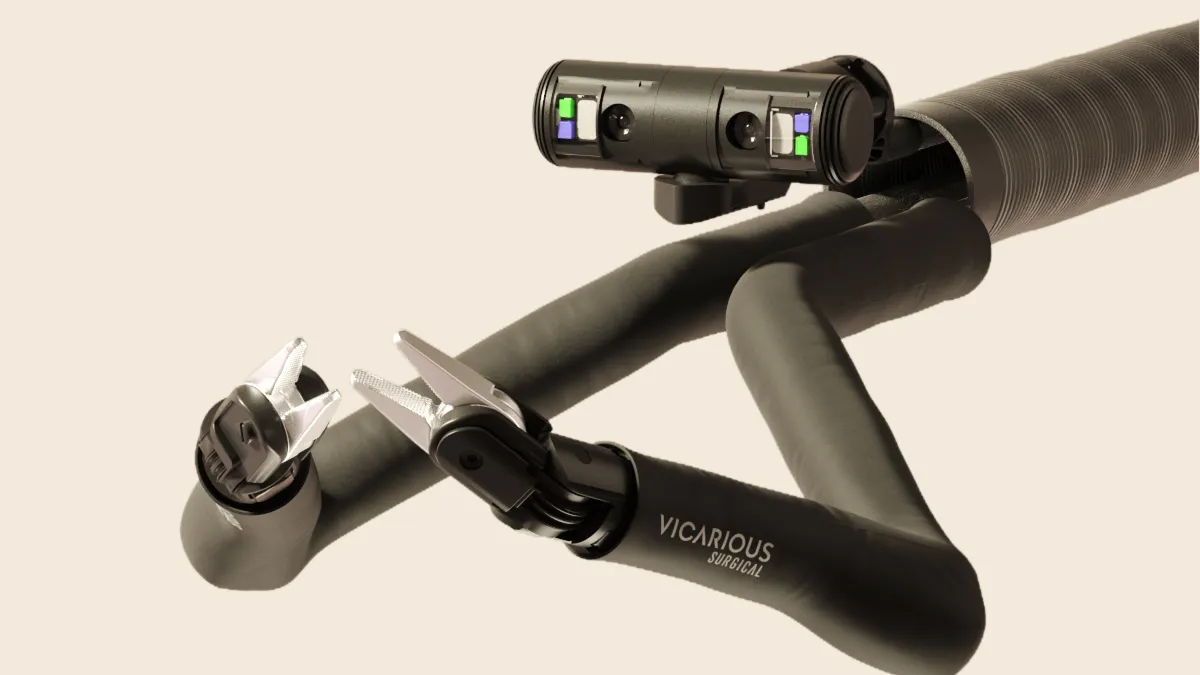Dive Brief:
- Vicarious Surgical, which is preparing to make a 510(k) submission for a robotic system to rival Intuitive Surgical’s da Vinci, said it plans to lay off 14% of its workforce in a bid to conserve cash.
- The action is part of cost reductions that the company says will give it a cash runway of about two years.
- The medtech sector has been hit with a series of layoff announcements in recent days. Baxter is among the biggest device makers to reduce headcount, eliminating less than 5% of its global workforce, or about 3,000 jobs. Abbott is letting go of temporary workers who produced COVID-19 tests at a facility in Maine.
Dive Insight:
Vicarious, which has received funding from Bill Gates and Becton Dickinson, is going up against much larger rivals to robotic surgery incumbent Intuitive in attempting to bring a new system to market. Medtronic in December enrolled the first patient in a U.S. clinical trial of its Hugo robotic-assisted surgery system, while J&J also has a robot system in development.
Another surgical robot developer, Titan Medical, last week announced it is laying off 48 employees after failing to find a buyer for its assets.
Vicarious, based in Waltham, Mass., is cutting jobs in sales, marketing and administrative functions, but increasing funding of research and development, with the goal to “focus spending on those things that get the quality product out the door fast,” CFO William Kelly said Monday on an earnings call. The job cuts would affect about 23 people of the 165 employed as of March 2022, according to Vicarious’ latest annual report.
“While we have intentionally structured these changes to preserve our development and regulatory timelines, [we] understand that the reduction in resources, specifically the reduction of future planned spending, does naturally introduce additional timeline risk,” Kelly told analysts on the call.
The company burned through $67 million in cash in 2022, in line with its expectations, ending the year with $116 million on its balance sheet. That’s enough to cover Vicarious’ spending for about two years, he said.
BTIG analyst Ryan Zimmerman said Vicarious is taking a calculated risk in reallocating resources to R&D.
“Frankly, we think some of the hiring in anticipation of a launch in FY25 may have been premature, so if [Vicarious] can operate in a leaner fashion and still make its timelines, we think investors should be okay with this,” Zimmerman wrote in a research note.
Shares of Vicarious fell about 4% to $3.35 in morning trading on Nasdaq, after climbing about 14% on Monday.












